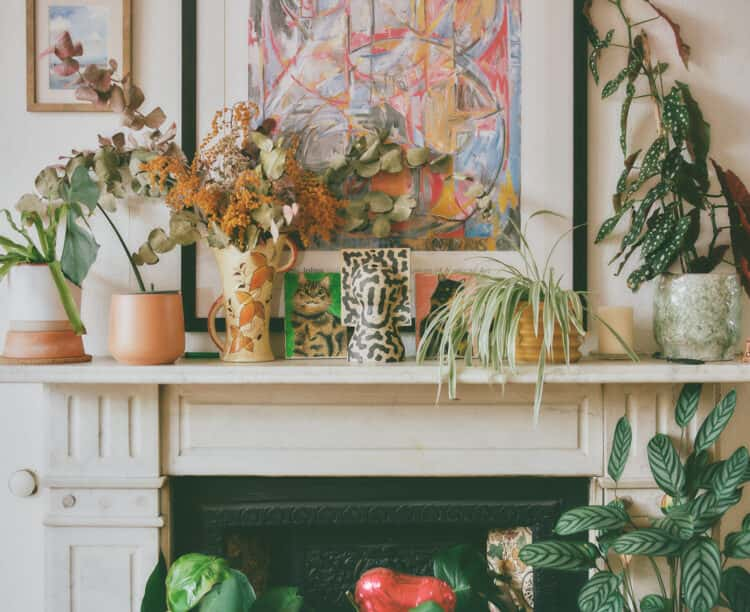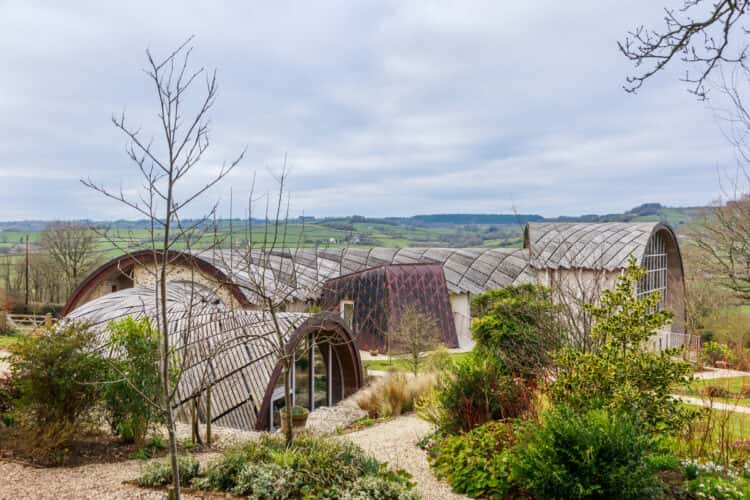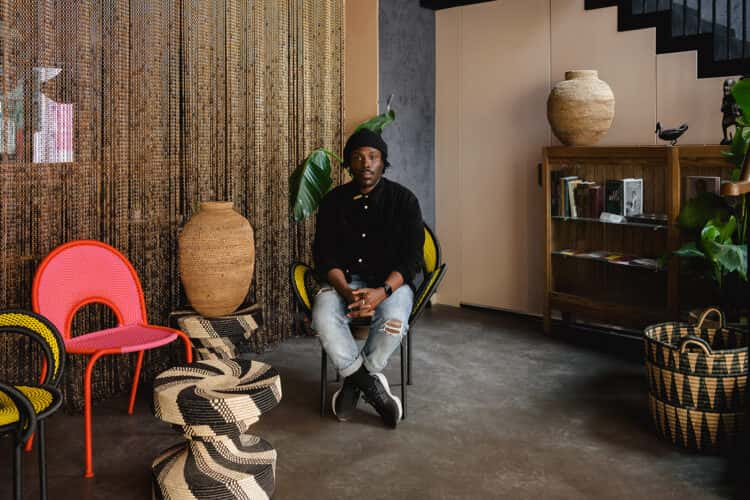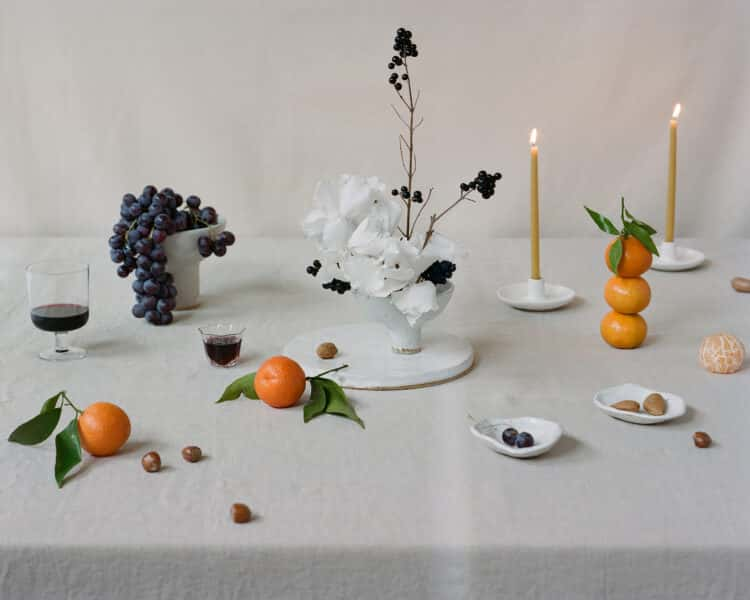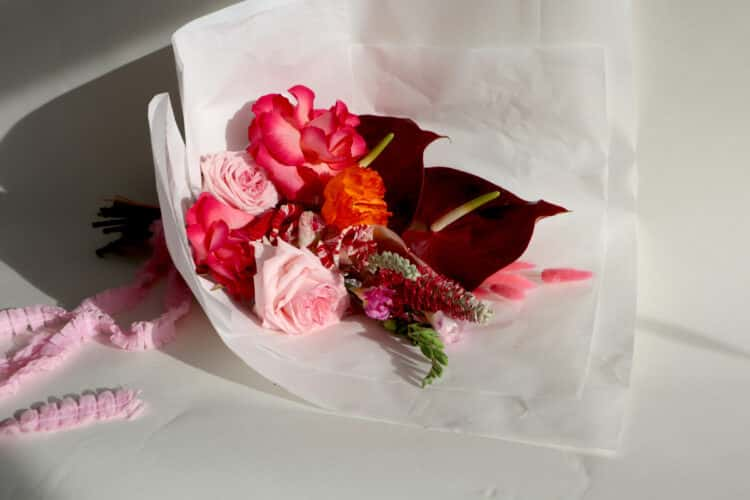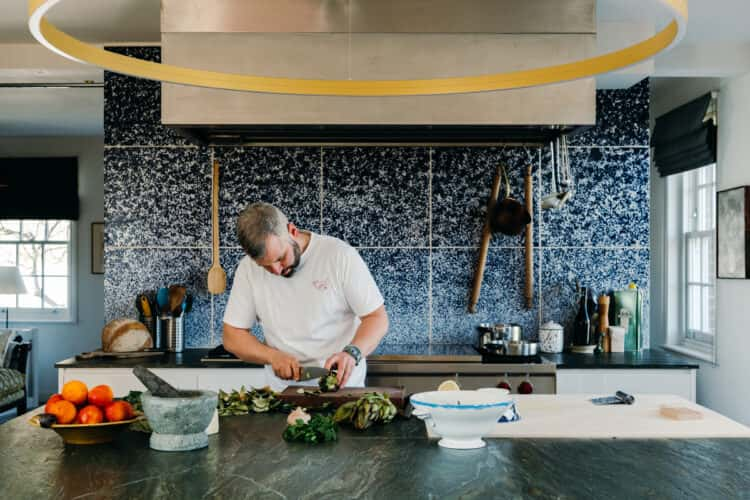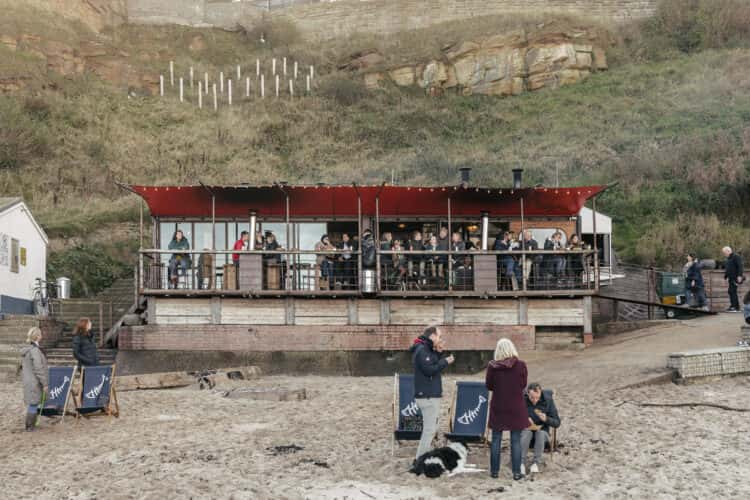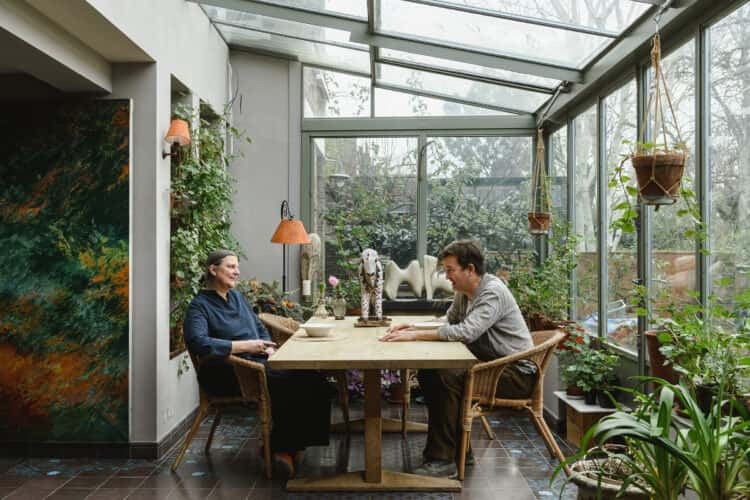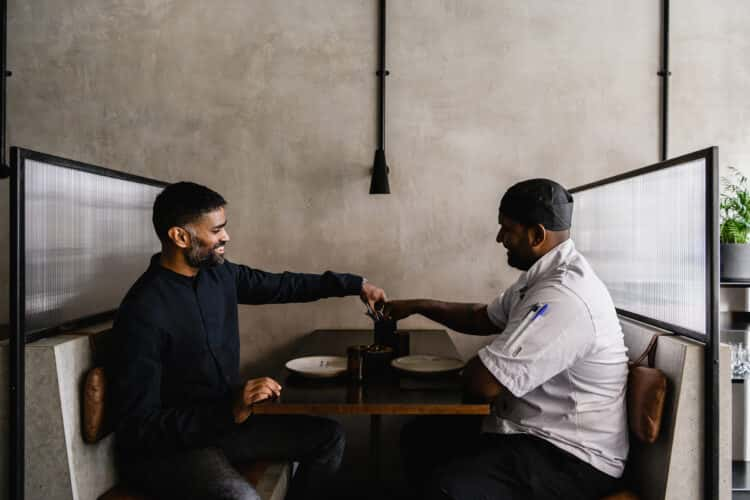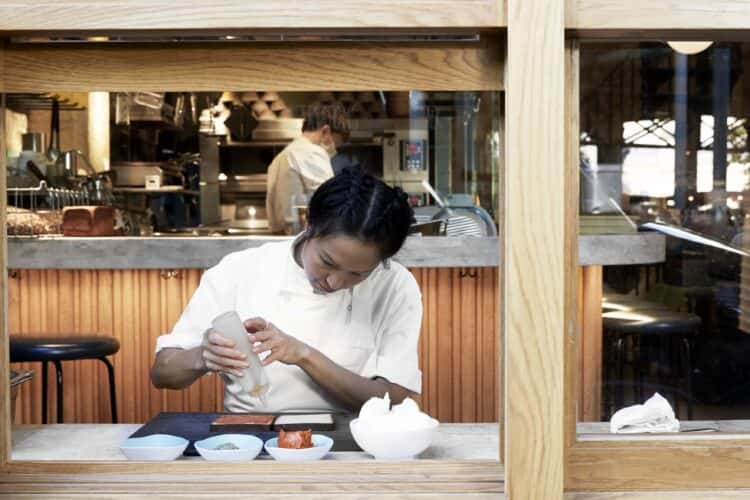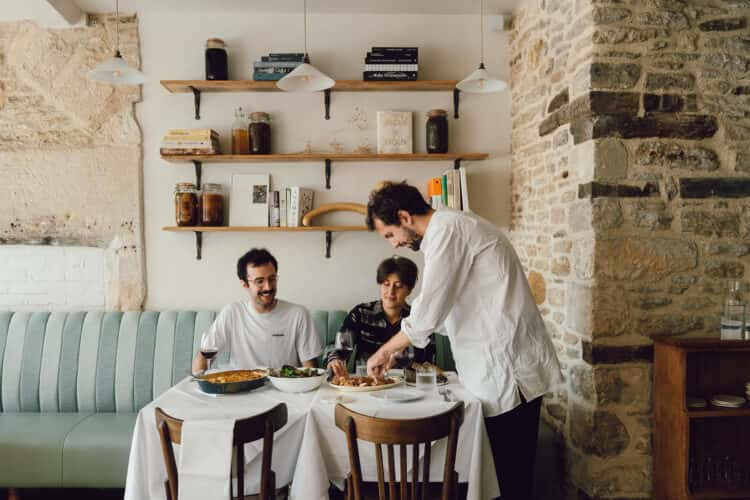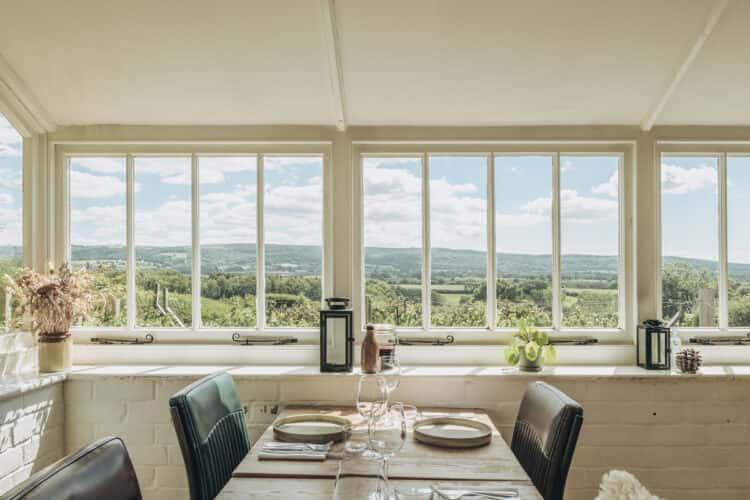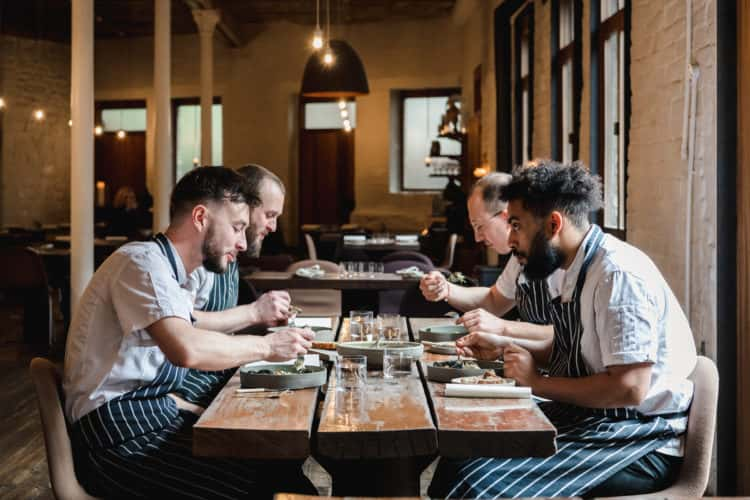Four at the Fore: London’s most innovative creatives on pushing things forward

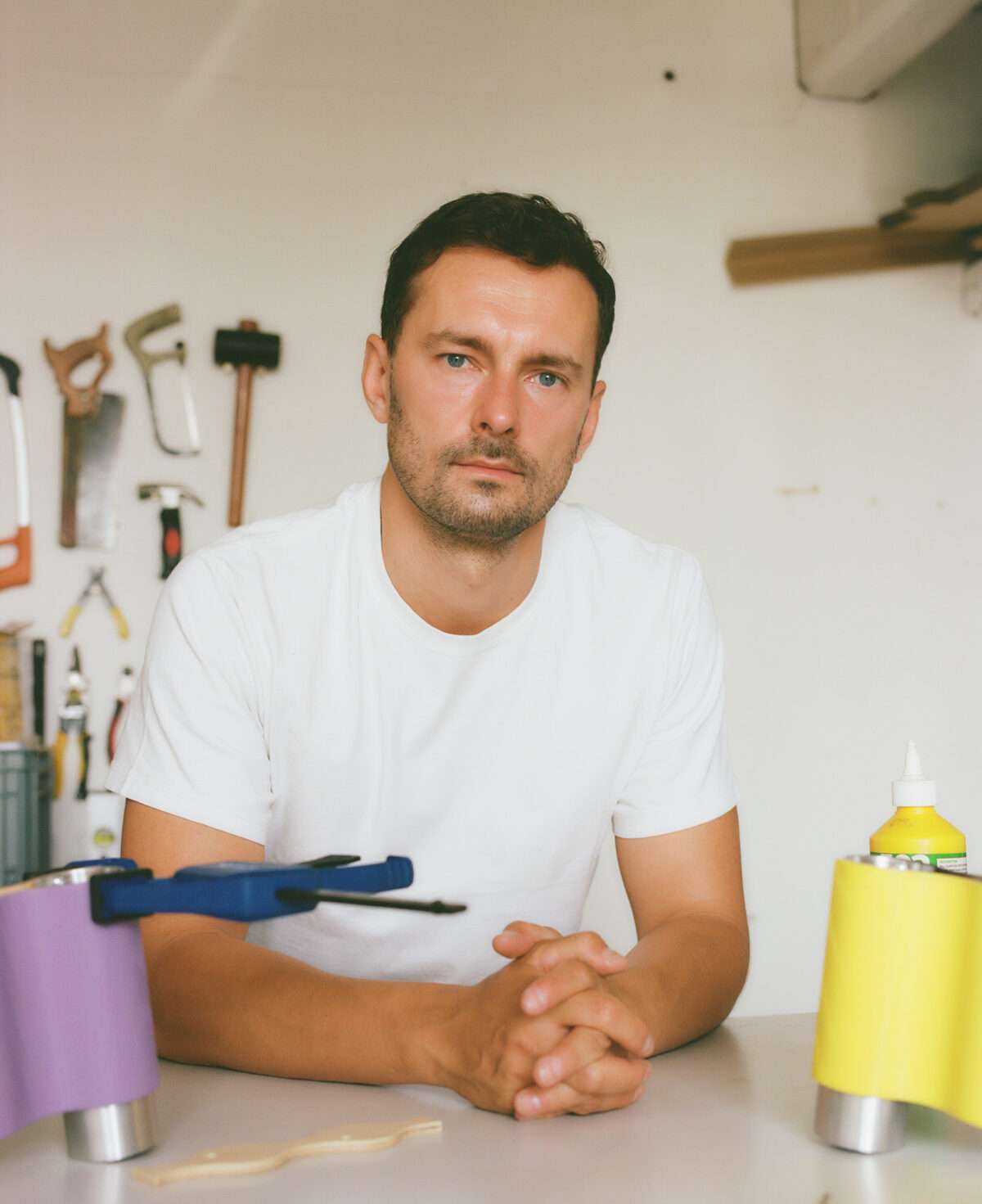
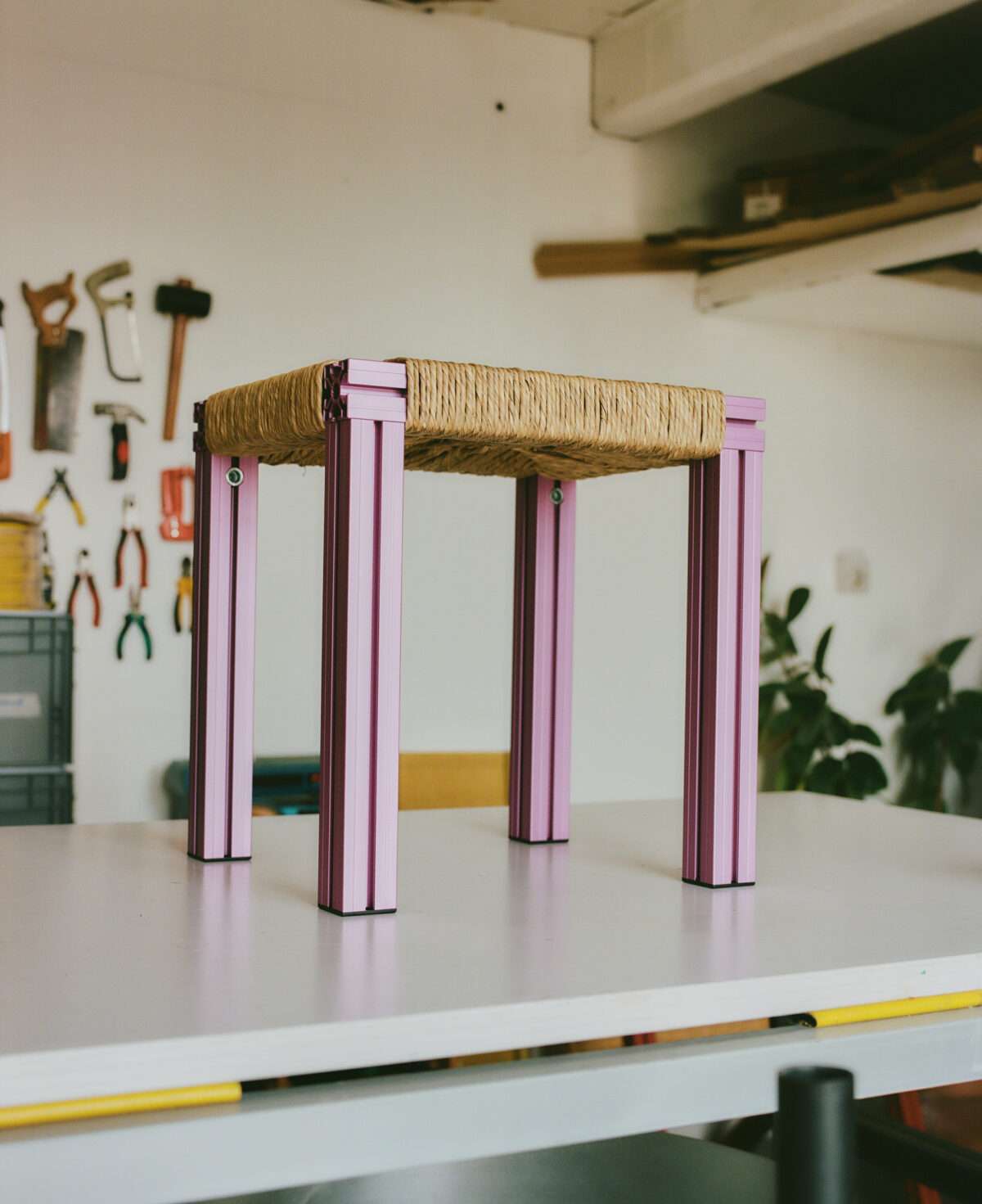
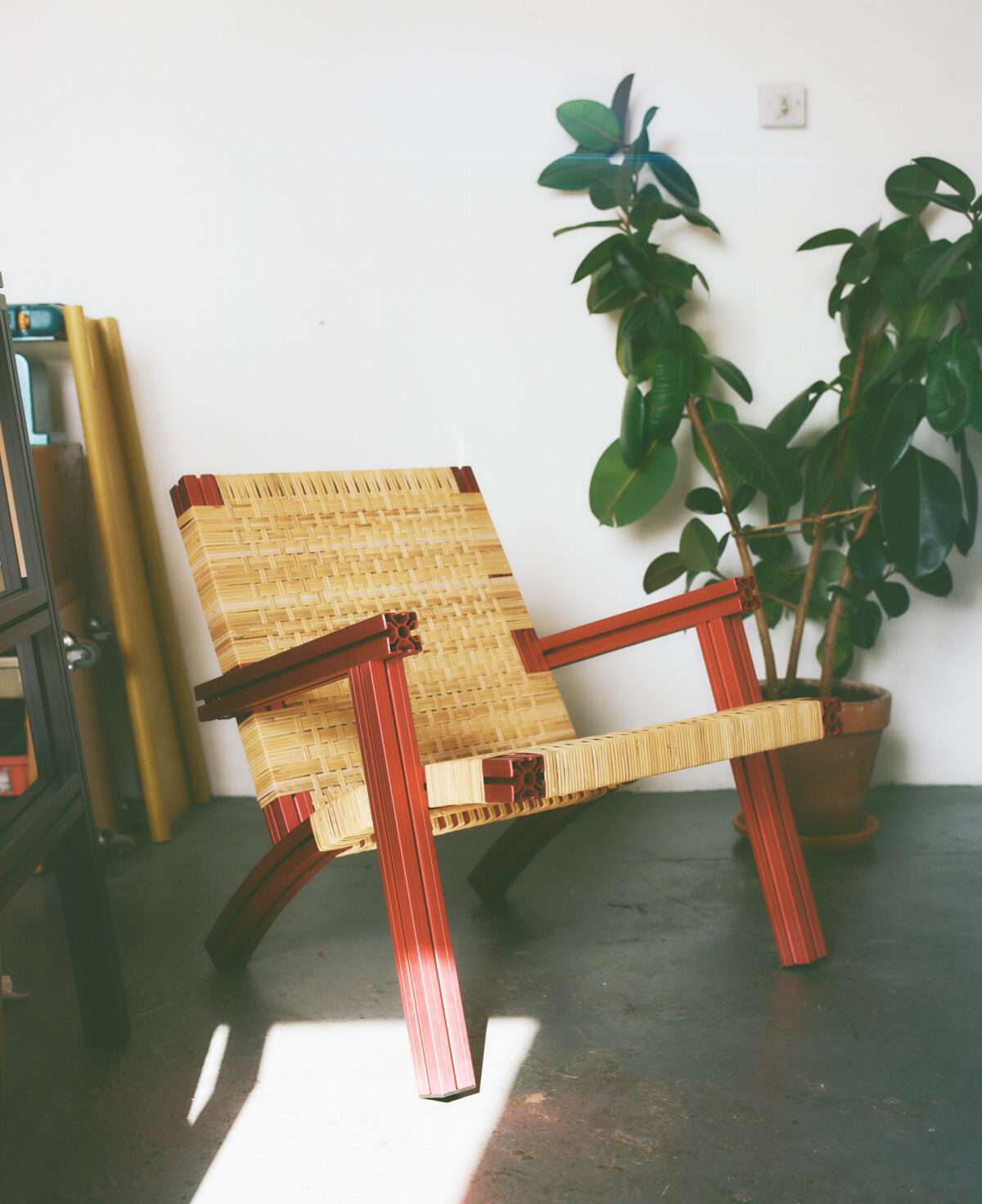
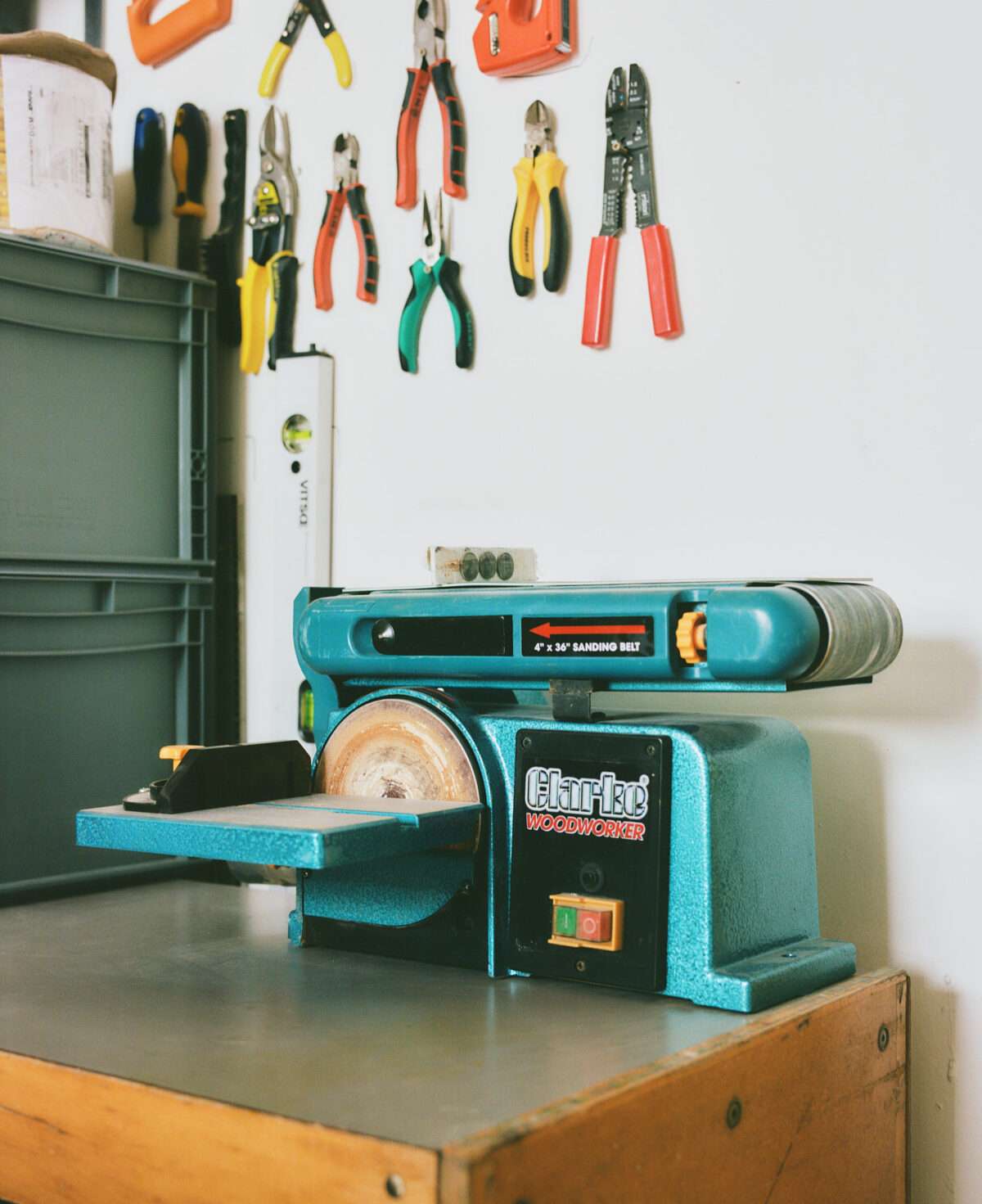
What things are made of is at the heart of this London-based, German-born designer’s creative concepts. “The common thread running through my work is the juxtaposition of contrasting materials, whether it be old or new, cheap or valuable,” he says. “Through mixing seemingly clashing things together, I draw attention to their extreme beauty.”
For his Anodised Wicker bench and chairs, which were originally realised for Wakefield’s Hepworth Gallery, Tino uses precisely extruded aluminium frames to form their skeletal structure and accentuates them through difference. Their soft seats are made using caning and rush seagrass, which are intricately woven by hand, and wind their way around the cool metal. The result is a perfect symbiosis of modernity and tradition, solidity and suppleness.
Tino’s inspiration for these pieces is wide-reaching; one can see the influence of American artist Donald Judd in their rigid colourful structure, of Børge Mogensen in the woven seats. But Tino also looked to “daily life”, he says. “I just keep my eyes open and combine all the things I see in different places in my mind.” For the frames, for instance, “I took a ubiquitous material – aluminium – and combined it with something highly and traditionally crafted, giving it new life.” His braiding technique, meanwhile, was informed by the ancient craftsmanship of many European cultures.
The designer is clearly focused on magnifying the smaller details of everyday life that sometimes pass us by. Consider his Cable rug, a wriggle of electric leads that covers the floor of his Dalston home. What would transpire were it plugged in? “They are fully functional extension wires. But nothing would happen,” he laughs. “The current would just run through, under your feet.” It’s a droll piece of design – which is part of the point. “People are always trying to hide electric cords, but in this piece they occupy the centre of attention, becoming something beautiful.”
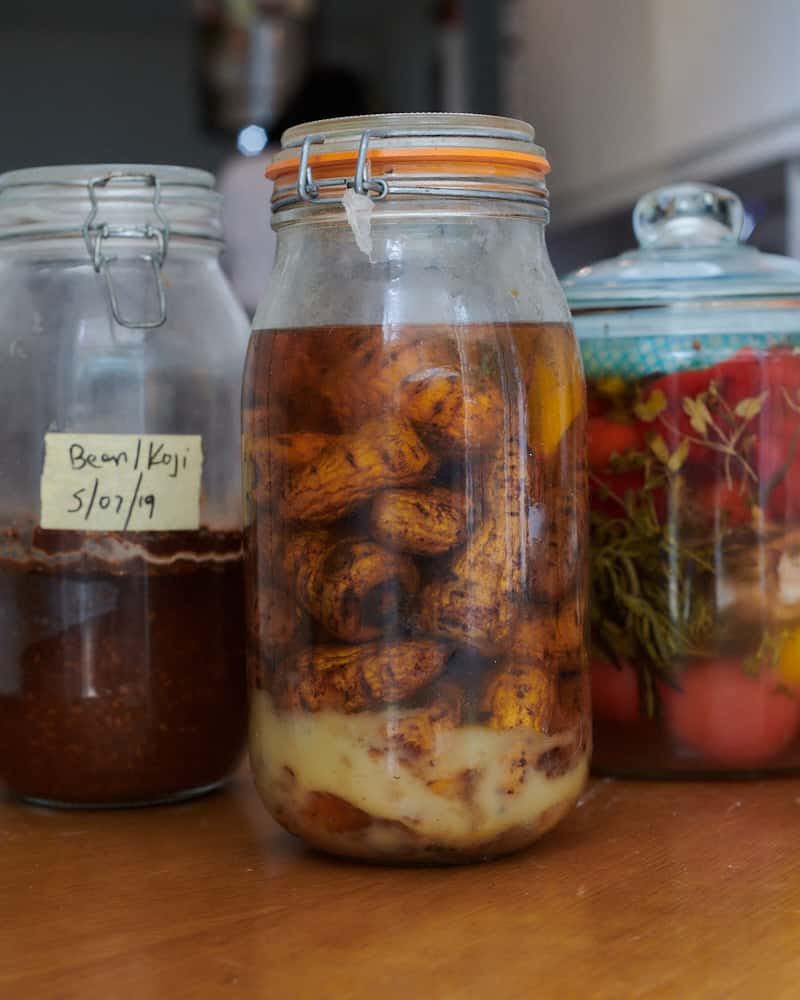
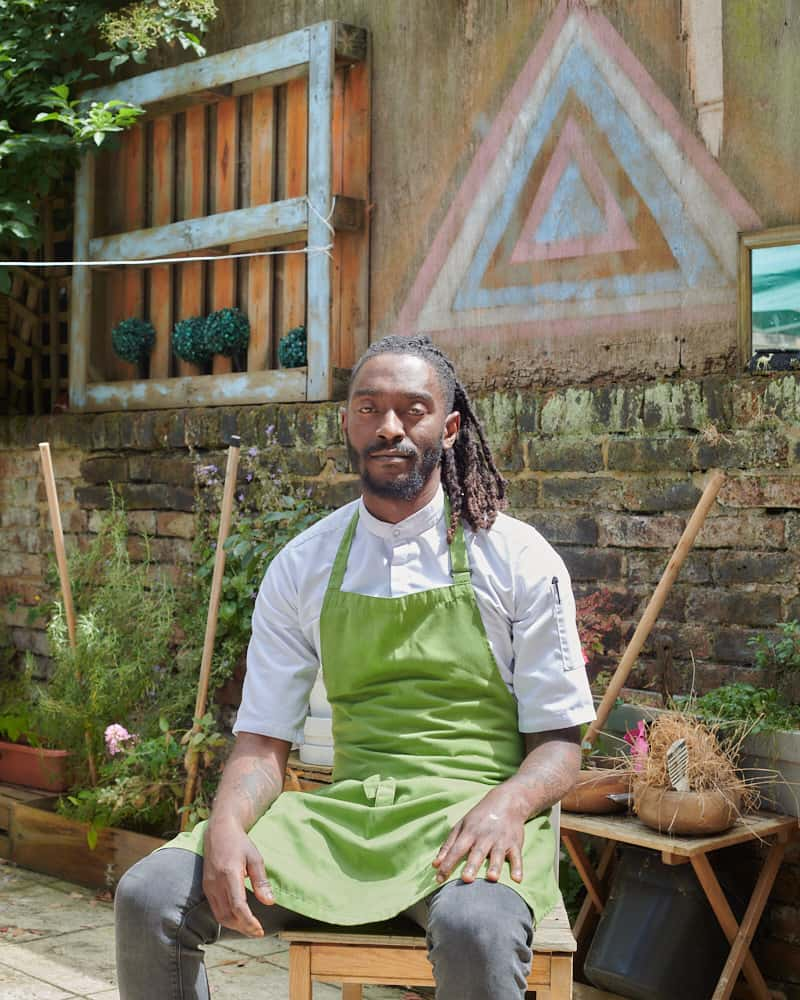
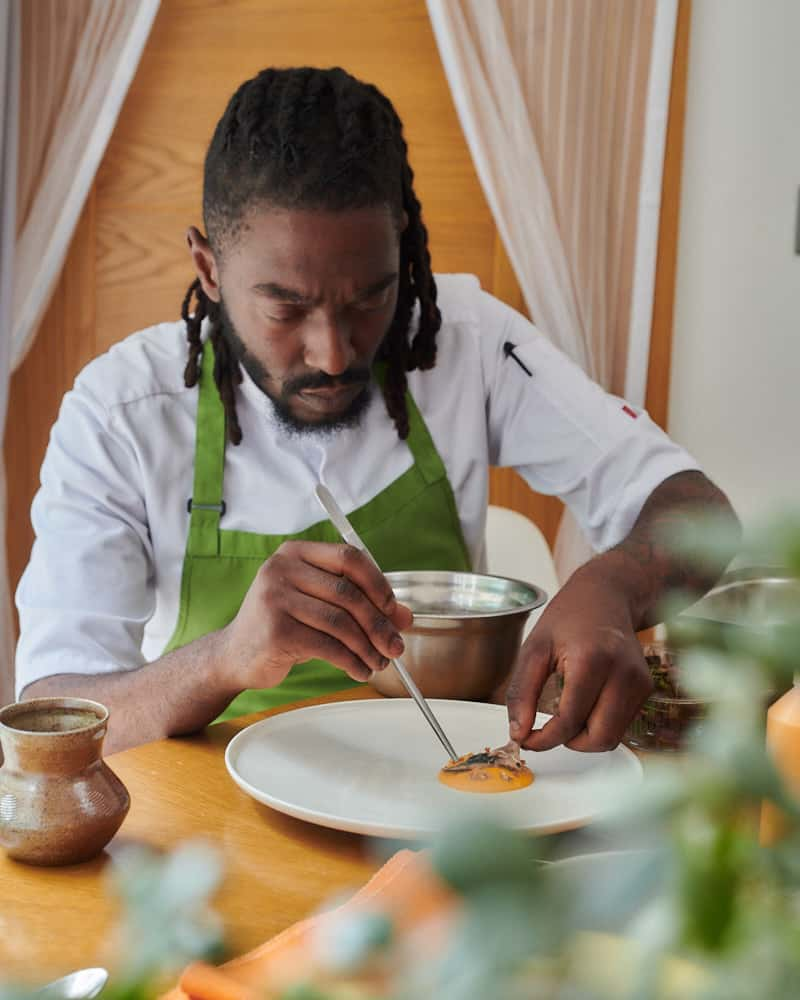
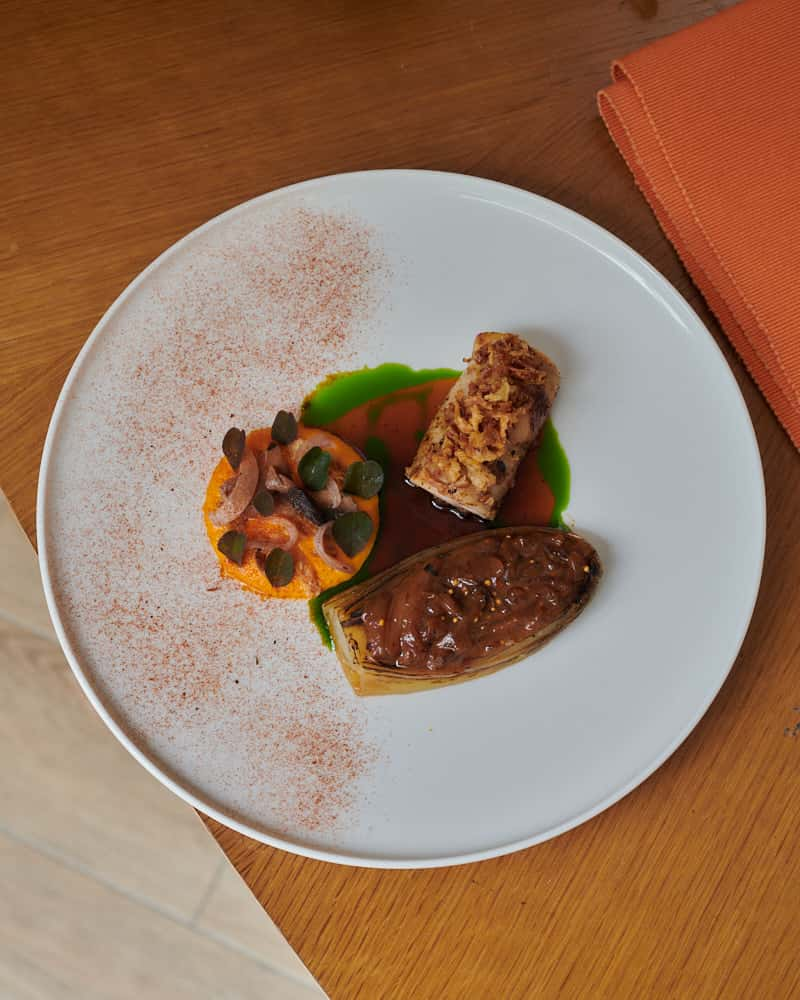
“Each meal is part of my storytelling process – and the ingredients are my language,” says William Chilila, the former head chef at Akoko and a semi-finalist of MasterChef:The Professionals in 2018. His own kitchen, then, is made up of various dialects, which speak with each other in serendipitous harmony: on one counter, there’s jarred vegetables at various stages of fermentation; on another, deep-brown milo soils; while on the stove, different pots bubble, the scents of rosemary and scotch bonnet tickling the air.
William’s culinary inclination was fostered in childhood. He grew up on a farm in Zambia, an only child. “I spent all my time with my grandmother and my auntie,” he says. “I just loved the smells coming out from the kitchen.” He never intended to become a chef, however, and studied instead in design and architecture. But “when my grandad passed away, something changed,” he explains. “I remembered that he had once told me that I ought to apply my creativity to my love of cooking.” Thankfully, William paid heed.
“Cooking is all about creativity and curiosity. You can give the same piece of fruit to six people and they will all come back with something different,” Chilila says, smiling. Classically trained in the French tradition, William had a lot of time for its methodical approach. “I loved the technical finesse that came with patisserie.” But as time went on, he wanted to “flip the script”, to combine his training with the flavours he had grown up with. “My cooking is the story of where I came from, but it’s also important to me that I use what I’ve learned to create something new and unexpected.”
Yes, William’s food tells stories, but something more sophisticated is at play here too. A bite ignites inquisitiveness. “I love the moment of silence while someone savours my food, followed by their questions: ‘Where did this vegetable come from?’ ‘What is the spice in here?’ People leave the restaurant with new knowledge.”
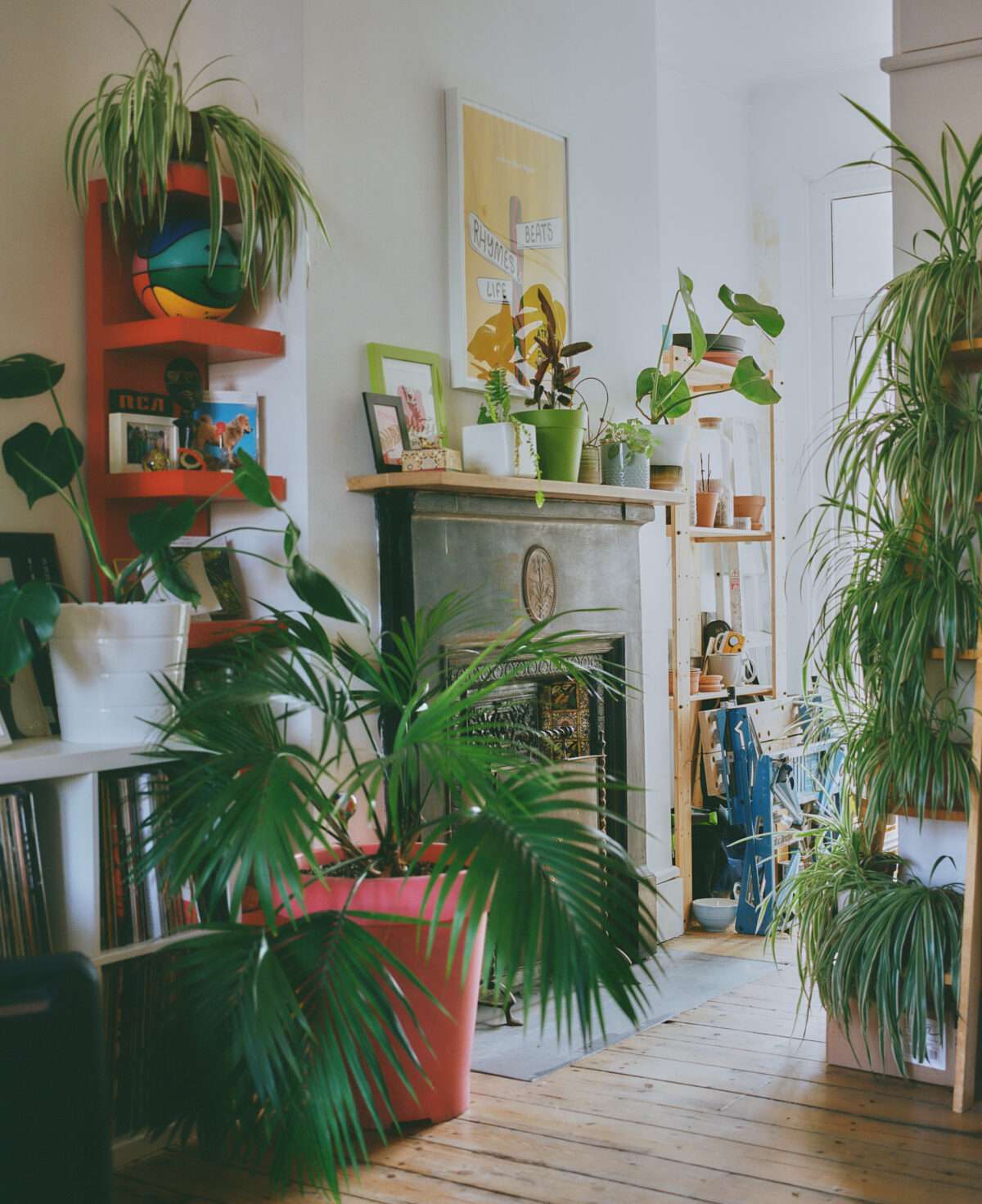

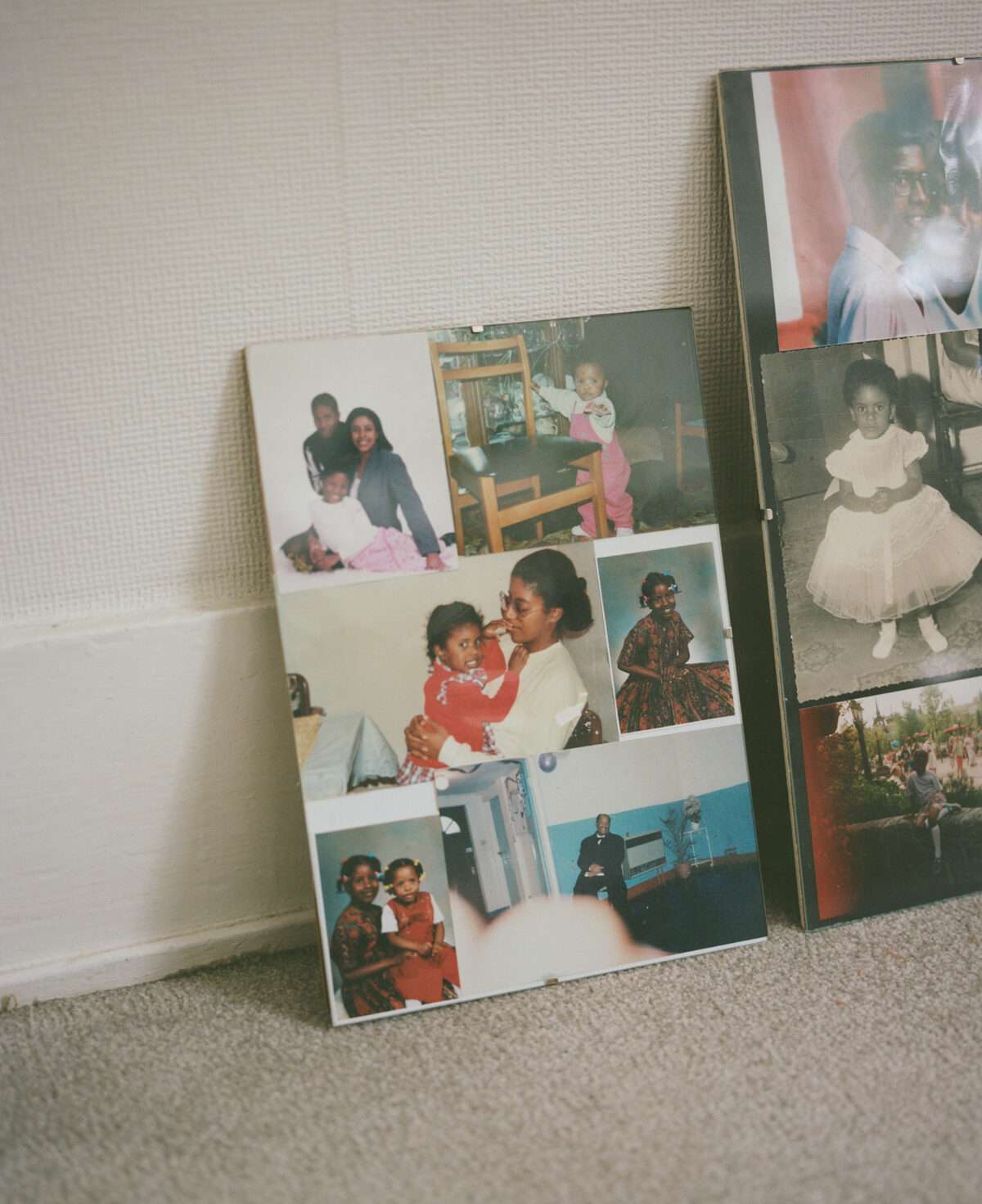
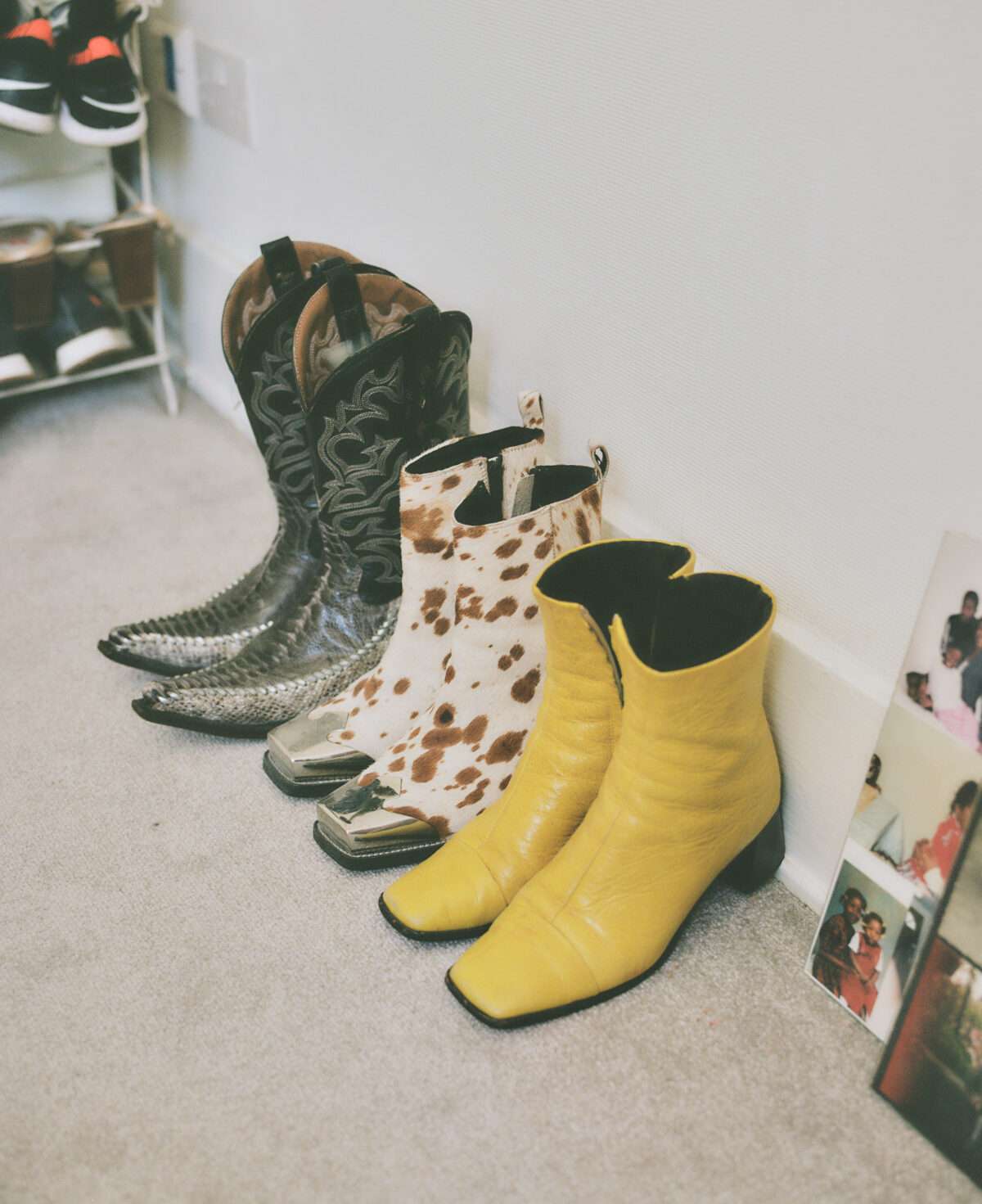
“Taking things slowly and resting shouldn’t be a privilege. You have to check in with yourself, take time to ask yourself questions about what you really want. It can save your life sometimes.” Georgina Johnson, curator, editor and founder of the creative platform The Laundry Arts, is waxing lyrical on the power of taking time. In 2020, Georgina released The Slow Grind: Finding Our Way Back to Creative Balance, essays challenging the “wake up, grind, repeat” mindset under our hyper-accelerated systems. Her collection imagines alternative models of work that protect our mental health, championing a future that’s more equitable.
The book arose from Georgina’s desire to increase people’s awareness of racial inequality in the creative industries, something she experienced as a Black person working in fashion. “Coming up against so many barriers took so much of my mental energy,” she says. “We all have an insatiable drive to be part of the industry, to survive, to succeed – and it burns us out.” Her anthology is designed to prompt people into slowing down. “And to ask yourself important questions: how can we nurture each other? How can we rethink success in a non-linear way? And, in turn, how can we practise community-led and ecological care.” Featuring writing from the likes of artist Deborah Joyce Holman and stylist Ib Kamara, the collection “is a gathering of voices lifting each other up”.
“Repair and regeneration” were at the forefront of Georgina’s mind as she compiled The Slow Grind. A part of this was accessibility. “I’m dyslexic and I find reading on colourful paper easier,” she says of its soft-lilac and pale-banana pages. “Someone emailed me saying that she had Asperger’s syndrome and this was the first book she’d been able to read from front to back for the first time in three years.”
And how does Georgina herself practise repair and regeneration in the everyday? “I ask questions all the time,” she says. “Before I throw things away in the house, I think about how else they can be used. In my room, I completely repainted and retiled my childhood side drawer, so the whole thing matches the stage of life that I’m in now. And I love it.”




“My aunt, my uncle and my grandfather were all architects,” says the designer Joe Armitage. Growing up amid such creativity meant his childhood was an object lesson of sorts. It seems only natural that he would follow in his family’s footsteps.
In 2022, Joe has launched a collection of lamps. They honour one created by his grandfather, Edward Armitage, a contemporary of Le Corbusier, Maxwell Fry and Pierre Jeanneret. The original design, tall and bird-like, has perched in a corner of Joe’s family home for as long as he can remember. Joe – formerly design director of lighting company Tala – has lightly refined the piece with his own forward-looking touch.
Edward’s lamp has its origins in India. In 1952, the young architect moved with his wife, Marthe, to Ludhiana. The next two years in Punjab would prove seminal to their work. Marthe, now known as a doyenne of textile design, observed local wood-block printing, which became the impetus for her own company.
Edward, meanwhile, created his floor lamp, combining the dynamism of brutalism with the warm wood he had to hand. “My grandad improvised,” says Joe. “The ring at the back of the lamp was crafted from an old paint tin attached to motorbike spokes. The shade was made of paper.” Out of Edward’s innovative spirit emerged something of refined anthropomorphic beauty: a slender, arched rosewood stem, opening up into a beak-like lampshade.
As Edward reimagined waste to create his lamp, so Joe has too. His lampshade is made using a material he’s developed by combining plastic water bottles with a thin layer of felt. “It resembles Japanese paper – and it softens the light wonderfully.” It’s also incredibly durable and built to last. “Sustainability has always been part of my design process,” Joe explains, “but I don’t push that aspect. I think that it should just be inherent to making.”
